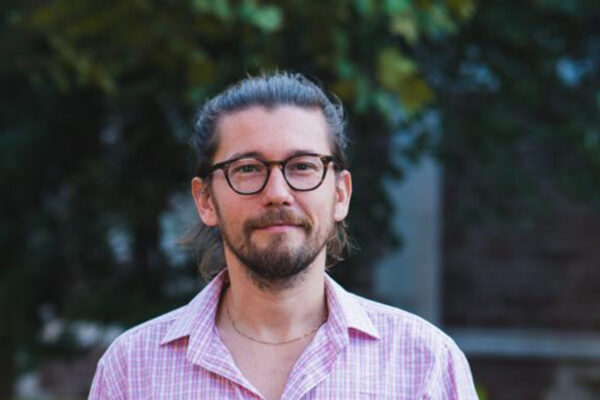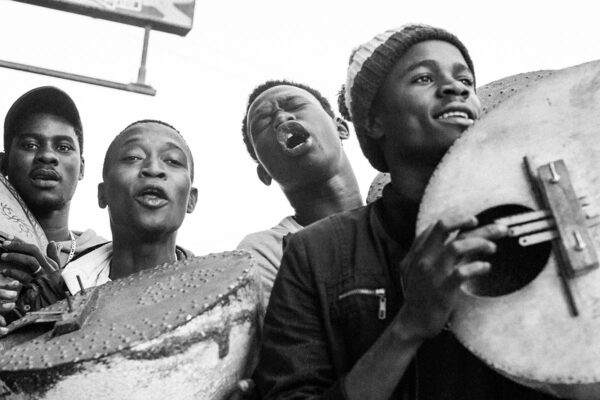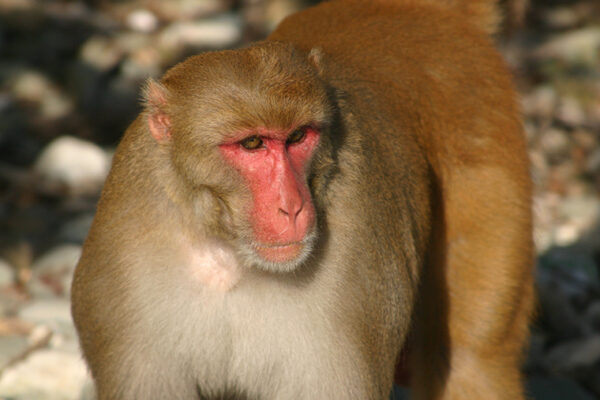Nearly five years after his death, colleagues of Washington University in St. Louis anthropologist D. Tab Rasmussen are recognizing his contributions by listing him as first author on a primate evolution paper published March 26 in the Proceedings of the National Academy of Sciences.
Rasmussen was a professor of anthropology in Arts & Sciences from 1991 until he died Aug. 7, 2014, at age 56 at his home in Edwardsville, Ill.
“Listing Rasmussen as first author is a tribute to his memory, but it’s not just a courtesy listing,” said John Kappelman, corresponding author of the PNAS paper and a longtime research partner of Rasmussen. “This research was Tab’s idea from the start, and the fact that it’s gotten this far is really a tribute to his persistence and determination. Every one of the co-authors unanimously agreed to keep him as first author on the paper.”
Among the co-authors are four graduates of the anthropology program at Washington University: Ellen Miller, professor of physical anthropology at Wake Forest University, who earned her PhD in 1996; Mercedes Gutierrez, lecturer in integrative biology and physiology at the University of Minnesota, who earned her PhD in 2011; Samuel Muteti, a research scientist at the National Museums of Kenya, who earned a master’s in anthropology in 2010; and Anthony Friscia, adjunct assistant professor of Integrative biology and physiology at the University of California, Los Angeles, who earned his bachelor’s degree with Rasmussen in 1994.
All worked with Rasmussen on field work related to the study. For Gutierrez, it was her dissertation project. Miller was Rasmussen’s first paleontology graduate student, Gutierrez his last.
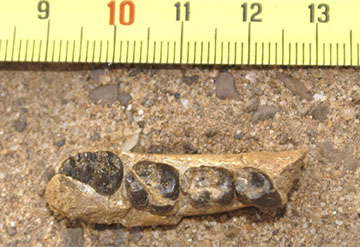
The paper details the discovery of 22 million-year-old, fossilized monkey teeth in the badlands of northwest Kenya. Describing the fossils as coming from a new species, Alophia metios, the study helps fill a 6 million-year void in Old World monkey evolution. By linking a previously discovered 19 million-year-old fossil tooth in Uganda and a 25 million-year-old fossil tooth found in Tanzania, the discovery sheds light on how the diets of these primates may have changed their evolution.
“For a group as highly successful as the monkeys of Africa and Asia, it would seem that scientists would have already figured out their evolutionary history,” said Kappelman, an anthropology and geology professor at The University of Texas at Austin. “Although the isolated tooth from Tanzania is important for documenting the earliest occurrence of monkeys, the next 6 million years of the group’s existence are one big blank. This new monkey importantly reveals what happened during the group’s later evolution.”
Kappelman, who conducted field work with Rasmussen in Africa for nearly three decades, traces the genesis of the current study to some fossils that he and Rasmussen uncovered during the late 1990s at a site in Ethiopia. Rasmussen spent years trying to make sense of the Ethiopian fossils, eventually visiting a Nairobi museum in 2004 to compare his finds with specimens collected in Kenya.
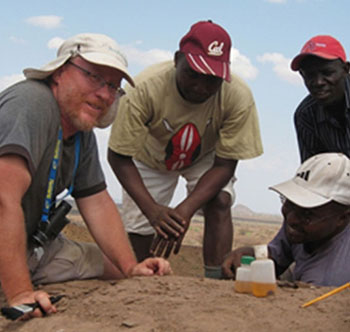
There, Rasmussen realized that some of the Kenyan fossils must be much older than previously estimated. Seeking further confirmation, he and his team began searching for other early primate skeletons in the famous fossil-rich region of West Turkana in northwestern Kenya.
“Today, this region is very arid,” said Benson Kyongo, a collections manager at the National Museums of Kenya. “But millions of years ago, it was a forest and woodland landscape crisscrossed by rivers and streams. These ancient monkeys were living the good life.”
While in the field, the team uncovered hundreds of mammal and reptile jaws, limbs and teeth ranging from 21 million to more than 24 million years old, including remains of early elephants. The newly discovered monkey teeth are more primitive than geologically younger monkey fossils, lacking what researchers referred to as “lophs,” or a pair of molar crests, thus earning the new species its name, Alophia, meaning “without lophs.”
“These teeth are so primitive that when we first showed them to other scientists, they told us, ‘Oh no, that isn’t a monkey. It’s a pig,’” Miller said. “But because of other dental features, we are able to convince them that yes, it is in fact a monkey.”
The success of Old World monkeys appears to be closely tied to the unique arrangement of their teeth. Researchers speculate that Alophia’s primitive dentition was adapted to a diet that consisted of hard fruits, seeds and nuts, and not leaves, which are more efficiently processed by the more evolved dentition of fossil monkeys dating from after 19 million years ago.
Today, the configuration of cusps and lophs on the molar teeth of modern primates enables them to process the wide range of plant and animal foods encountered in the diverse environments of Africa and Asia.
“You can think of the modern-day monkey molar as the uber food processor, able to slice, dice, mince and crush all sorts of foods,” Gutierrez said.
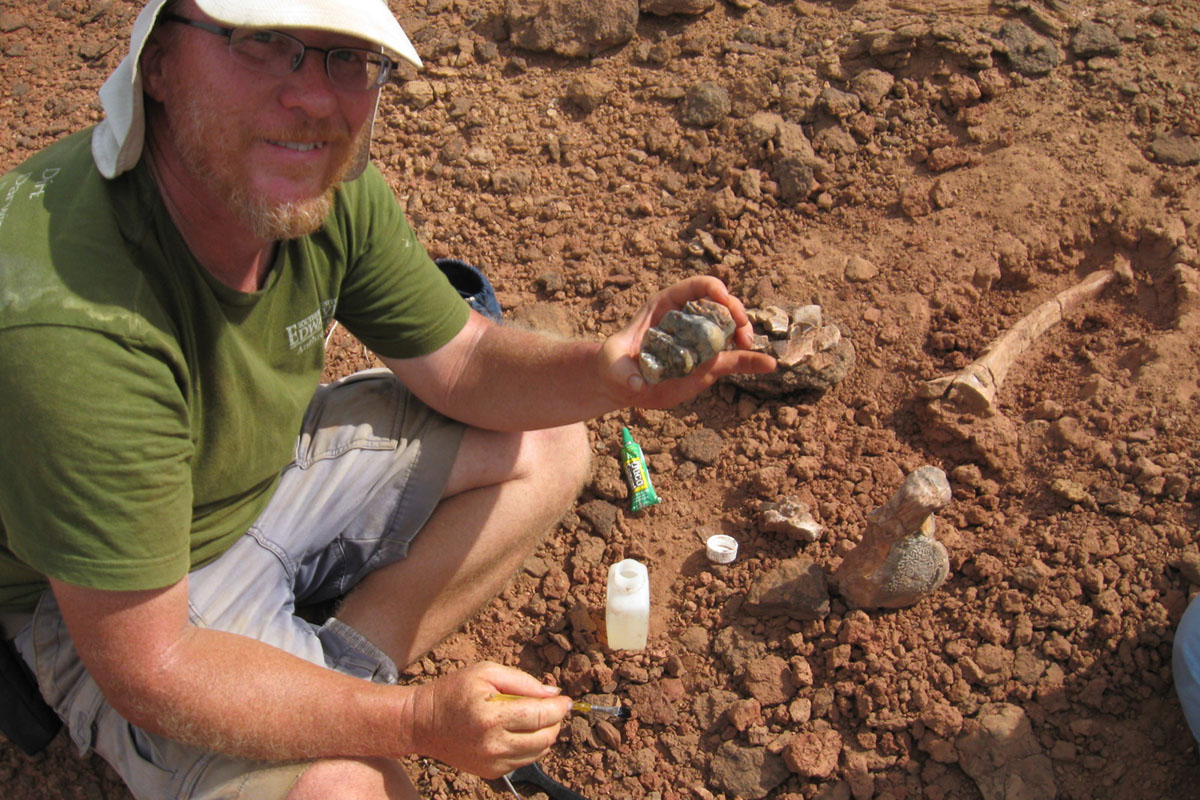
Kappelman describes Rasmussen as a “superb anthropologist” who was great at fostering a spirit of teamwork and collaboration in the field — a goal that could be especially challenging considering the large and diverse groups of researchers that often participated in his projects.
This assessment echoes from comments that Rasmussen made in a 2010 story in his department’s newsletter, Anthropology News.
“The team I’ve got — I love them all,” Rasmussen said at the time. “We do a great job in terms of fieldwork and writing, and they’re some of the nicest people. I would say that our work in Kenya is a good example of how, once you get a productive research team together, you need to keep it going. I’m doing things with them I could never do by myself.”
In the same article, Rasmussen described his enthusiasm for mentoring graduate students, including the unique contributions these students can make to field projects.
“Our philosophy is not to bring in graduate students who do the same thing as you, but to bring in students who do something different,” he said. “Part of my enthusiasm for graduate training is that these individuals are going out and learning how the world works in a new way. Each one is a little piece, but it’s so gratifying to see. Graduate students are really an axis to new knowledge about things we’ve always wanted to know.”

